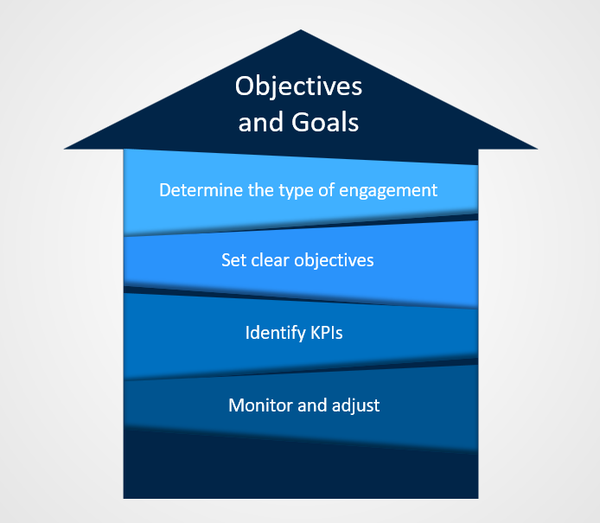Effective Stakeholder Engagement: Best Practices for Business Success
Stakeholder engagement is an essential aspect of business success. Engaging stakeholders means understanding their needs and concerns and involving them in decision-making processes. Effective stakeholder engagement can help businesses build trust, reduce risk, and improve performance. However, engaging stakeholders is not an easy task. It requires careful planning, effective communication, and the implementation of best practices.

What Is Stakeholder Engagement And Why Is It Important?
Stakeholder engagement is the process of communicating and collaborating with individuals or groups who have a vested interest in a project, product, or organization. These stakeholders can include employees, customers, investors, suppliers, community members, and more.
Stakeholder engagement is important because it helps build relationships and trust between the organization and its stakeholders. By involving stakeholders in decision-making processes, the organization can gather valuable insights and feedback that can lead to better outcomes. It can also help prevent conflicts and opposition, as stakeholders feel heard and understood.
Additionally, stakeholder engagement is becoming increasingly important in today's socially conscious environment. Businesses are expected to take responsibility for their impact on society and the environment, and engaging with stakeholders is an important part of demonstrating that commitment.
Identifying Your Stakeholders
- Customers/clients
- Employees/staff
- Management/leadership
- Shareholders/owners
- Suppliers/vendors/partners
- Regulatory/government bodies
- Community groups/local residents
- Competitors/industry peers
- Media/journalists
- Non-profit organizations/NGOs.
- Investors/financial institutions
- Service providers/consultants
- Trade unions/employee associations
- Academia/educational institutions
- Environmental groups
- Health and safety organizations
- Political organizations/policymakers
- Industry associations
- International organizations/foreign governments
- Special interest groups.
Setting Clear Objectives And Goals For Engagement
Define your target audience: Before setting objectives and goals, it's important to know who your target audience is. Who do you want to engage with? What are their needs and interests? Answering these questions will help you understand your audience and tailor your objectives accordingly.
- Determine The Type Of Engagement: Engagement can take many forms such as social media engagement, email engagement, or in-person engagement. Determine the type of engagement that is most suitable for your audience and aligns with your goals.
- Set Clear Objectives: Objectives should be specific, measurable, achievable, relevant, and time-bound (SMART). This will help you track progress towards your goals and make necessary adjustments.
- Identify Key Performance Indicators (KPIs): KPIs measure the success or progress towards achieving your objectives. Determine the KPIs relevant to your objectives and track them regularly.
- Monitor And Adjust: Regularly monitor your progress towards your objectives and KPIs. Make necessary adjustments to ensure you stay on track and achieve your goals.
Developing A Communication Plan
- Define Your Audience: Identify the key stakeholders you need to communicate with. This could include employees, investors, customers, vendors, or other relevant parties.
- Set Communication Goals: Your communication goals should be focused on what you want to accomplish with your message. For example, increasing brand awareness, introducing a new product, or addressing a company crisis.
- Choose Your Channels: Determine the best channels to reach your target audience, including email, social media, print advertising, radio or TV, or direct mail.
- Develop Your Message: Your message should be clear, concise, and tailored to your audience. It should convey your brand's tone, voice, and values and be relevant to their needs and interests.
- Choose Your Timing: Consider the best time to deliver your message to ensure maximum impact and avoid key dates or events that could detract from your message.
- Assign Responsibilities: Establish who will be responsible for executing the communication plan, including internal or external resources.
- Monitor And Evaluate: Track the success of your communication plan and continually assess and adjust your messaging to ensure you're meeting your goals and objectives.
Active Listening And Responding To Stakeholder Feedback
Active listening is the ability to focus and pay attention to what someone is saying or communicating. It involves taking in verbal and nonverbal cues, asking clarifying questions, and giving feedback to show that you understand what the person is saying.
Responding to stakeholder feedback is an essential component of effective stakeholder management. It involves acknowledging and addressing concerns and suggestions from stakeholders in a timely and appropriate manner.
Here are some tips for active listening and responding to stakeholder feedback:
- Listen Attentively: Pay attention to both the verbal and nonverbal cues the stakeholder is giving. This will help you understand their concerns and respond appropriately.
- Be Empathetic: Put yourself in the stakeholder's shoes and try to understand their perspective. This will help you respond in a way that addresses their concerns and needs.
- Clarify: Ask clarifying questions to ensure you understand the stakeholder's feedback correctly. This will help you give an appropriate response.
- Thank The Stakeholder: Show your appreciation for the feedback by thanking the stakeholder for taking the time to share their thoughts and opinions.
- Respond In A Timely Manner: Respond to the stakeholder's feedback promptly. This will show that you value their input and are committed to addressing their concerns.
Evaluating And Adjusting Your Engagement Strategy
- Define Your Goals: What do you want to achieve with your engagement strategy? Is it increasing brand visibility, driving website traffic, generating leads, or improving customer loyalty? Having clear goals will help you determine the metrics to measure your success.
- Assess Your Current Strategy: Analyze your engagement efforts to see what's working and what's not. Look at your social media metrics, website analytics, and email marketing campaigns to get insights into what your audience is responding to.
- Determine Your Target Audience: Who are you trying to engage with? Knowing your target audience will help you create content and messaging that resonates with them.
- Create A Plan: Develop a plan of action based on your goals and audience. This could include posting more frequently on social media, sending personalized emails to your subscribers, or creating engaging videos or blog posts.
- Monitor And Adjust: Continuously monitor your engagement efforts and adjust your strategy accordingly. Use analytics tools to track your progress and make data-driven decisions on what's working and what needs improvement.
Conclusion
In conclusion, effective stakeholder engagement is crucial for the success of any business. By engaging with stakeholders, businesses can build relationships, establish goodwill, and understand the needs and expectations of their customers, employees, shareholders, and the wider community. This results in improved business performance, increased profitability, and long-term sustainability. Furthermore, effective stakeholder engagement enables businesses to identify and manage risks, anticipate changes, and adapt to new challenges. Ultimately, organizations that prioritize stakeholder engagement are better equipped to thrive in an ever-changing business landscape and deliver value to all their stakeholders.




